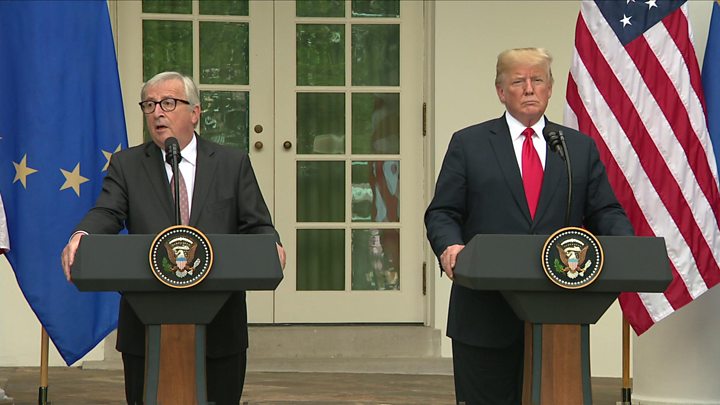
The trade relations between the United States and Europe, which were on roller coaster ride over the past few months amid trade tariff threats and retaliation measures being thrown from each side, seem to be on the path of subsiding.
President of the European Commission, Jean-Claude Junker and U.S. President Donald Trump agreed in a meeting on Wednesday to work toward zero tariffs and boost trade relations.
“We have identified a number of areas on which to work together. Work towards zero tariffs on industrial goods – that was my main intention – to propose to come down to zero tariffs on industrial goods.
“We have decided to strengthen our cooperation on energy. The European Union will build more terminals to import liquefied natural gas from the U.S. This is also a message for others,” Juncker said after the meeting.
As far as agriculture is concerned, the European Union promised to import more soybeans from the U.S. and agreed to work together on the reform of the WTO.
“This of course is based on the understanding that, as long as we are negotiating, unless one party would stop the negotiations, we hold off further tariffs and we reassess existing tariffs on steel and aluminium,” Juncker added.
“Already today, the United States and the European Union have a USD 1 trillion bilateral trade relationship — the largest economic relationship anywhere in the world. We want to further strengthen this trade relationship to the benefit of all American and European citizens,” Trump said.
“This is why we agreed today, first of all, to work together toward zero tariffs, zero non-tariff barriers, and zero subsidies on non-auto industrial goods.”
The trade war among global powers started to break out in March 2018, when the United States imposed 25 pct tariffs on steel and 10 pct tariffs on aluminium citing national security reasons.
China, one of the key trading partners of the U.S. has been among the mostly affected countries by the tariffs and has already introduced measures to retaliate. Global powers like the EU, Mexico and Canada have not been spared from the tariffs either resulting in growing geopolitical tensions on a global scale as they also turned to retaliation.
Just last week, the European Union introduced “provisional safeguard measures” concerning imports of a number of steel products as a response to the U.S. steel tariffs.
The dry bulk shipping and container shipping have already felt the impact of the tariffs, however, so far, that impact is subdued. However, the threat of second wave of tariffs worth USD 16 billion of Chinese imports is currently being reviewed and if they are implemented, the tanker and gas shipping industries can also expect changes to trade lanes.
The US crude oil exports are most likely to be affected and these are primarily driven by China, which was responsible for 25 pct of all US seaborne crude oil exports in terms of volumes in 2017, according to BIMCO.